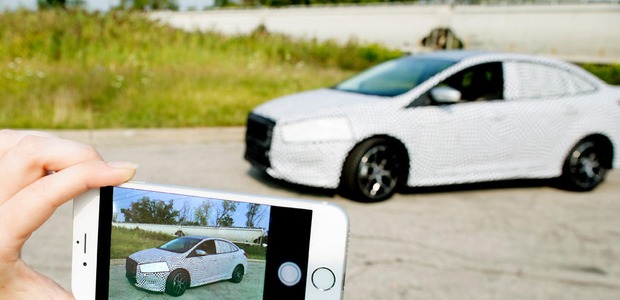advertisement
How FORD uses modern camouflage to hide in plain sight
Engineers are developing new ways to hide Ford prototypes in plain sight using modern camouflage designs and techniques. No industry…

Engineers are developing new ways to hide Ford prototypes in plain sight using modern camouflage designs and techniques.
No industry is as challenged with keeping its new products under wraps as automakers, which must test their vehicles on public roads. For years, Ford has been locked in a high-stakes game of cat-and-mouse with spy photographers – trying to keep its vehicles a secret until it’s time to show them to the world.
And now, with virtually everyone in possession of a camera and able to instantly share photos on the Internet, it’s more difficult than ever to keep a car hidden. For Ford, the stakes are particularly high.
advertisement
“While design is the fourth most important reason for purchase in the industry overall, it’s number two only behind fuel economy for Ford,” said Dave Fish, senior vice president, Expert Services at MaritzCX, which conducts the New Vehicle Customer Study. “It’s not surprising Ford goes to extraordinary lengths to try to keep the wraps on its designs as long as possible.”
Gone are the days when unsightly black vinyl was the only way to hide a vehicle. Now, this heavy cladding that’s difficult to apply is used in only a small percentage of testing, as Ford is employing more effective methods for concealing its vehicles throughout product development.
Primarily, Ford is using vinyl stickers with patterns that trick the eye and hide body lines to cover its vehicles. The modern patterns create an optical illusion that makes it difficult to see details. Such techniques result in obscure photographs, allowing Ford not only to hide its products from spy photographers, but to preserve its confidential designs and sustain its competitive edge.
advertisement
“The work we’re doing is crucial to Ford staying competitive in a constantly evolving industry,” said John LaQue, Ford section supervisor, Prototype Planning and Build. “When we make it to a reveal without a photo surfacing of a non-camouflaged car, we have all done our jobs.”
Each type of camo serves a purpose through various stages of development. Unlike vinyl cladding, vinyl stickers are universal – they don’t have to be made specifically for each vehicle. Stickers are stuck on the car in no particular order, are quicker to install and more durable, plus they allow for more accurate testing as they don’t add as much weight. The stickers don’t trap heat, nor do they so dramatically affect the aerodynamics of the vehicle.
Ford’s camouflage team can even change the shape of a vehicle to further mislead spies. The use of faux body panels can drastically change the look of a car, so an observer doesn’t know what the real vehicle looks like. Adding length or height is a key misdirection used to keep the true dimensions of a vehicle under wraps.
advertisement
As camera technology gets more sophisticated and even more readily available, engineers are working to advance vehicle camouflage techniques to keep Ford one step ahead of both the spies and the competition.